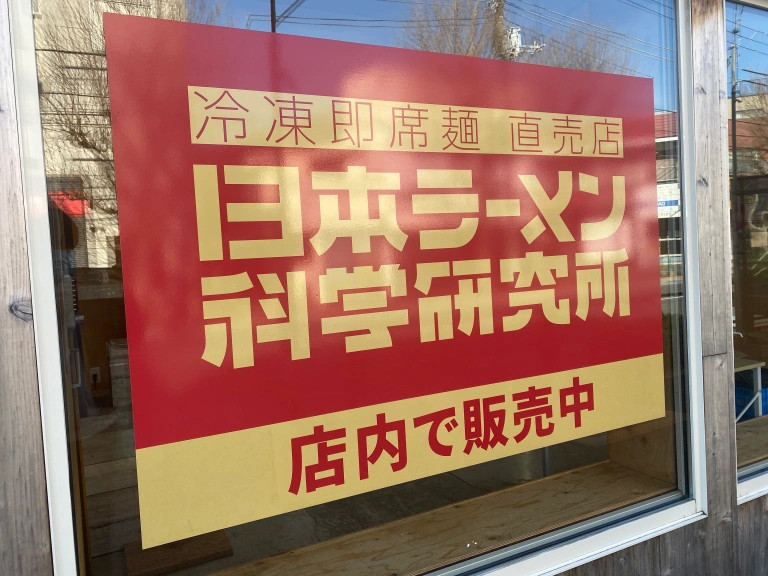
It turns out this ramen has a special cooking method too…
In the age of the COVID-19 pandemic, an unusual phenomenon has begun to appear in Japan: unstaffed food shops. These shops are open 24-7, have no one to watch them, and sell food more or less on an honor system. One of the most famous is Yukimatsu Gyoza, known for selling frozen batches of pot stickers. They’ve become so popular that branches have popped up all across Japan, from Hokkaido in the north all the way down to the island of Kyushu in the south. And for good reason; we tried their gyoza and it was seriously good.
But now Yukimatsu Gyoza has become even better because, starting in November 2022, the Japan Ramen Research Institute has started selling ramen in some branches. This institute is focused on finding ways to elevate ramen eaten at home, so of course the fact that they’ve set up shop together with Yukimatsu Gyoza piqued our interest. Just what are they offering, and how does it taste? We went to check it out.
Inside the Yukimatsu Gyoza we visited, we found two different kinds of freezer displays standing side by side: one for gyoza and one for ramen. We expected the ramen offered to be pretty simple, but in fact, topping sets that included grilled pork, bamboo shoots, and boiled eggs were also on sale. Each one came with enough toppings for three people and sold for 1,000 yen (US$7.63).
The ramen itself came in three-serving packs of either soy sauce or tonkotsu (pork bone broth) ramen for 1,000 yen. Since the shop is unmanned, the payment method was…
Simply putting our money in the familiar wooden box. Of course, there’s no way to get change here, so if you come to get some ramen or gyoza, make sure to bring exact change. We bought one of each ramen type, so we put in 2,000 yen.
Since the Japan Ramen Research Institute has access to a database put together by some of Japan’s leading ramen researchers, each and every flavor and each of the thousands of combinations of noodles and broth are analyzed and inspected. One of their most unique qualities is that the noodles are supposed to be cooked in the broth, which is one way they’re trying to level up at-home ramen.
We decided to try the tonkotsu ramen first. The box contained three packs of frozen ramen and three packs of frozen broth.
Cooking it was pretty easy. You add 400 milliliters (1.66 cups) to the soup base and bring it to a boil, then add the noodles (which amount to 100 grams or 3.5 ounces). Then wait 30 seconds before giving it a stir, and let it cook on medium heat. How long depends on which ramen you try; the soy sauce ramen noodles require three minutes, while the tonkatsu noodles require two. It was interesting that there were specific cook times for each type, which was proof that a lot of care had gone into producing each type.
In no time, our ramen was finished.
The broth was a bit cloudy, and it didn’t have the kind of intense smell we sometimes get from tonkotsu soup. Frankly, just from the look of it, it didn’t look like any kind of special ramen, but the flavor was surprising.
Our Japanese-language reporter, Takashi Harada, who was our taste tester for this round, originally hails from Fukuoka, which is considered the birthplace of tonkotsu ramen, and thus he is often annoyingly particular about tonkotsu ramen. In spite of that, he actually thought this was pretty good! The creamy soup was especially reminiscent of ramen you’d find in a stand along the streets of Fukuoka, so the fact that you could get a single serving of such high-level ramen for just 333 yen was pretty impressive!
The noodles were also delicious. They were on the thin side, which gave them a good crispness that paired well with the broth, soaking up enough of it without either overpowering the other. Plus, the fact that the noodles are cooked in the broth means everything is served at the same temperature, which is to say piping hot. It was similar to eating ramen cooked in a restaurant.
Add that to the fact that you only need to dirty one pot to make it and the fact that the shop is open 24 hours a day, and you have serious competition for regular ramen restaurants.
But that was just the tonkotsu ramen. What about the soy sauce ramen?
The cooking method was the same, so we boiled it in the broth…
And slurped it up.
Yup, it was perfectly delicious. We could really get a sense of the soy sauce flavor, the kind that you sip and then just sigh with pleasure. It wasn’t as if they’d toed any lines in terms of experimentation or elevation; instead, it was a simple, familiar, comforting soy sauce broth, which we felt was great.
Despite the delicious flavors of both, however, what really left a strong impression in our minds was just the way each bite was steaming hot, in a soothing way. Maybe our brain simply saw the steam rising from the bowl and automatically judged it as good. Maybe that was by design. Either way, we were impressed with how the Japan Ramen Research Institute put so much effort into developing these two kinds of ramen.
The price of just 333 yen per serving of ramen was far cheaper than other ramen takeout options, and we could decide to eat it on a whim, whenever we liked, so we sincerely hope they come out with more flavors, like miso or even fatty back pork. In any case, the two flavors already available are cropping up at Yukimatsu Gyoza stores across the country, so definitely check out the homepage to see if you can find them somewhere near you!
Images © SoraNews24
● Want to hear about SoraNews24’s latest articles as soon as they’re published? Follow us on Facebook and Twitter!
[ Read in Japanese ]

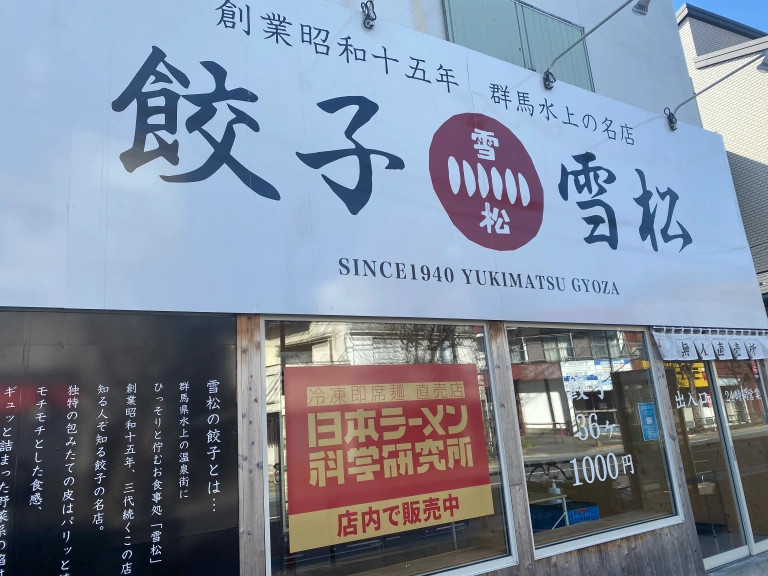
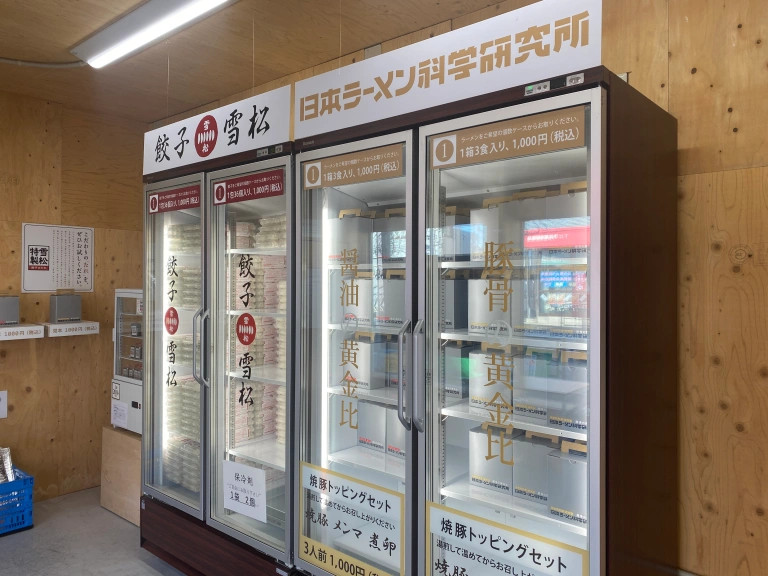
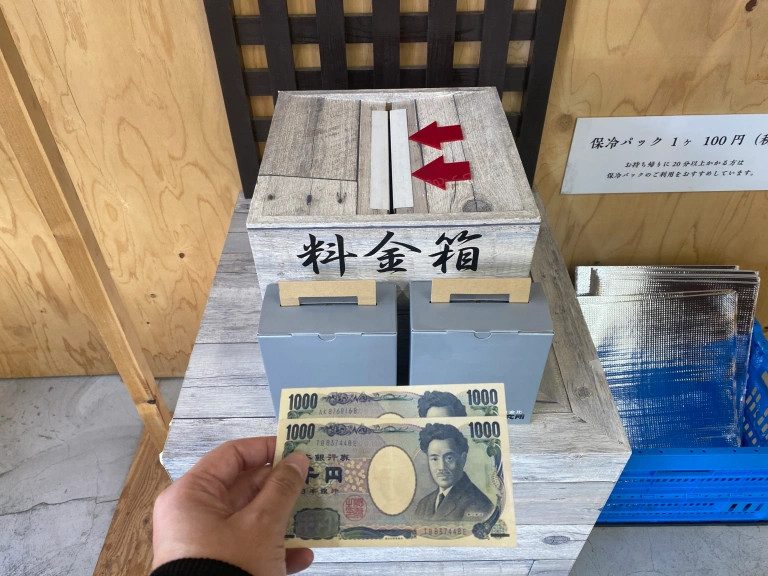
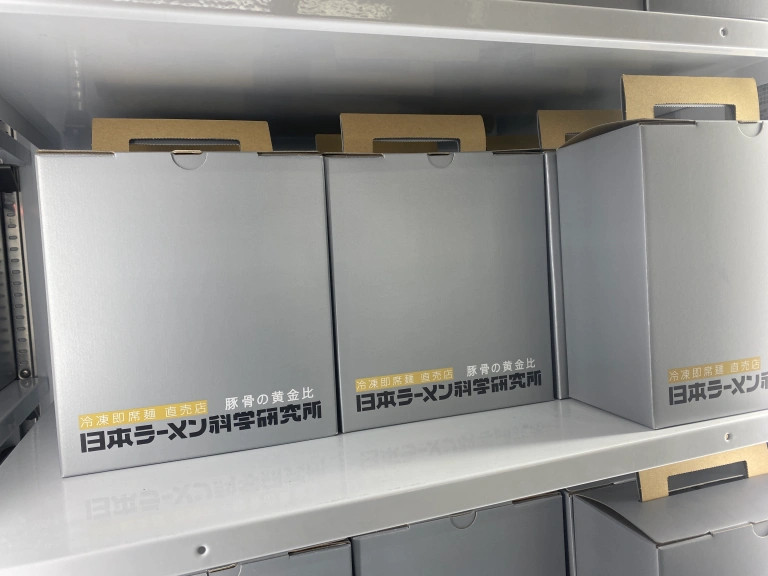
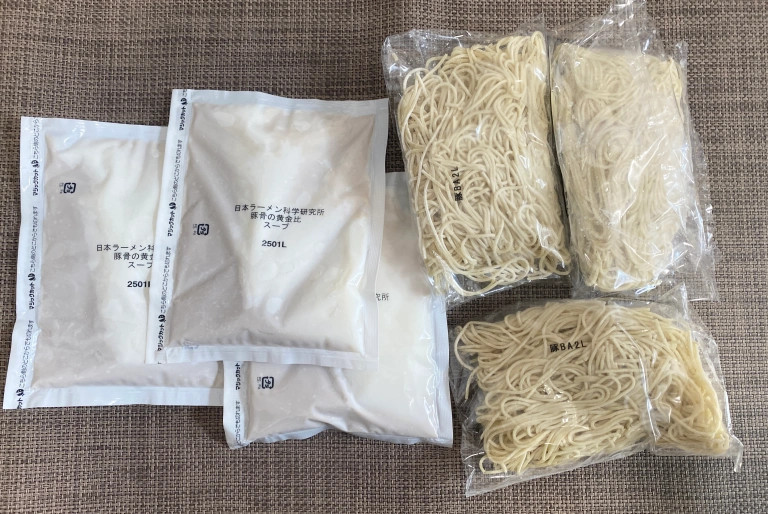
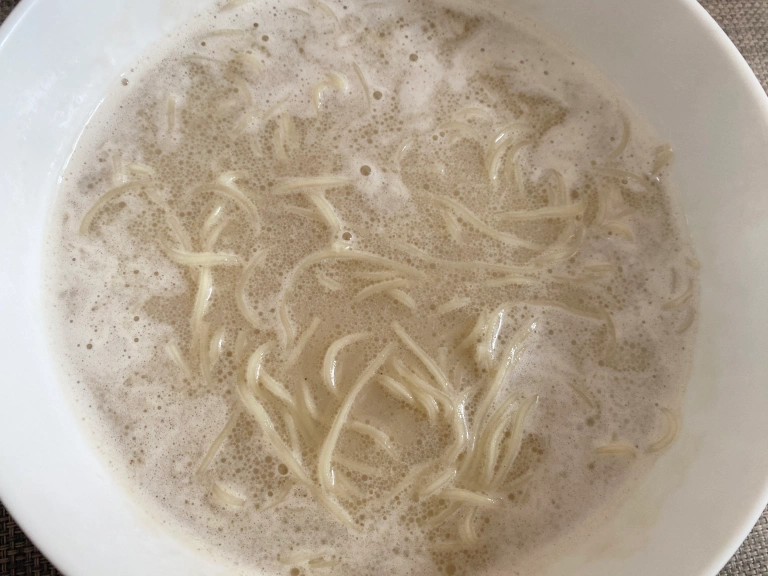
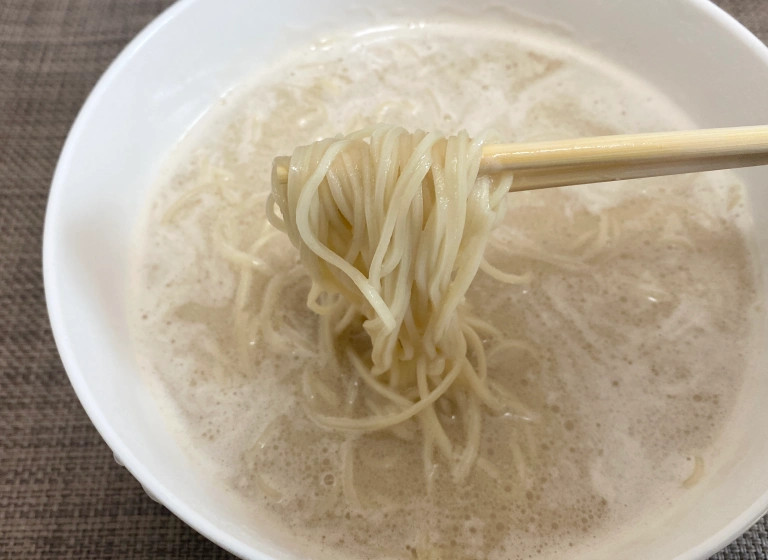
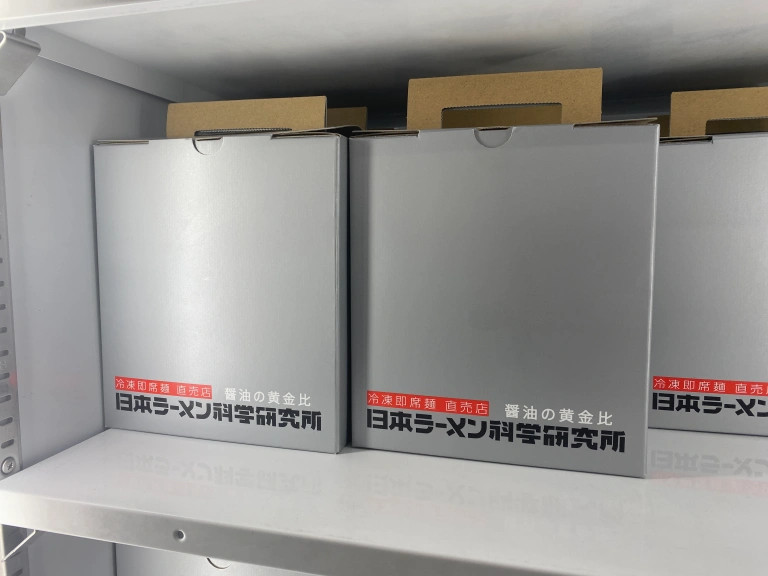


 Ramen vending machine in Tokyo satisfies noodle and gyoza cravings at any time of day or night
Ramen vending machine in Tokyo satisfies noodle and gyoza cravings at any time of day or night Tokyo’s new frozen ramen vending machines are brain-breakingly amazing【Taste test】
Tokyo’s new frozen ramen vending machines are brain-breakingly amazing【Taste test】 We get to be (probably) the first ever to try Nissin Cup Noodle’s latest creation: Gyoza ramen!
We get to be (probably) the first ever to try Nissin Cup Noodle’s latest creation: Gyoza ramen! How to make tonkotsu ramen at home 【SoraKitchen】
How to make tonkotsu ramen at home 【SoraKitchen】 We found a popular Japanese ramen chain in South Korea!…or so we thought
We found a popular Japanese ramen chain in South Korea!…or so we thought Japan’s new difficult-to-drink-from beer glass protects your liver, but it’s a brutal experience
Japan’s new difficult-to-drink-from beer glass protects your liver, but it’s a brutal experience Demon Slayer: Kimetsu no Yaiba gets new roller coaster attractions and food at Universal Studios Japan
Demon Slayer: Kimetsu no Yaiba gets new roller coaster attractions and food at Universal Studios Japan How to order snacks on a Shinkansen bullet train in Japan
How to order snacks on a Shinkansen bullet train in Japan New samurai glasses are Japan’s latest weird must-have souvenir
New samurai glasses are Japan’s latest weird must-have souvenir Hello, cosmetics! Clinique teams up with Hello Kitty this summer for first-time collaboration
Hello, cosmetics! Clinique teams up with Hello Kitty this summer for first-time collaboration High-fashion Totoro cuddle purse is like an elegant stroll in the forest【Photos】
High-fashion Totoro cuddle purse is like an elegant stroll in the forest【Photos】 Burger King Japan suddenly adds Dr. Pepper and Dr. Pepper floats to its menu nationwide
Burger King Japan suddenly adds Dr. Pepper and Dr. Pepper floats to its menu nationwide New Nintendo Lego kit is a beautiful piece of moving pixel art of Mario and Yoshi【Photos】
New Nintendo Lego kit is a beautiful piece of moving pixel art of Mario and Yoshi【Photos】 Japan’s cooling body wipe sheets want to help you beat the heat, but which work and which don’t?
Japan’s cooling body wipe sheets want to help you beat the heat, but which work and which don’t? Nintendo history you can feel – Super NES, N64, and GameCube controllers become capsule toys
Nintendo history you can feel – Super NES, N64, and GameCube controllers become capsule toys “The most Delicious Cup Noodle in history” – Japan’s French Cup Noodle wins our heart【Taste test】
“The most Delicious Cup Noodle in history” – Japan’s French Cup Noodle wins our heart【Taste test】 Starbucks releases a cute Frappuccino and Unicorn Cake…but not in Japan
Starbucks releases a cute Frappuccino and Unicorn Cake…but not in Japan Kyoto Tower mascot termination reveals dark side behind cute Japanese characters
Kyoto Tower mascot termination reveals dark side behind cute Japanese characters McDonald’s Japan’s Soft Twist Tower: A phantom ice cream only sold at select branches
McDonald’s Japan’s Soft Twist Tower: A phantom ice cream only sold at select branches Yabai Ramen: What makes this Japanese ramen so dangerous?
Yabai Ramen: What makes this Japanese ramen so dangerous? Finally! Nintendo Japan expands Switch 8-bit controller sales to everybody, Online member or not
Finally! Nintendo Japan expands Switch 8-bit controller sales to everybody, Online member or not Japanese government wants to build luxury resorts in all national parks for foreign tourists
Japanese government wants to build luxury resorts in all national parks for foreign tourists To combat declining birth rate, Japan to begin offering “Breeding Visas” to foreigners
To combat declining birth rate, Japan to begin offering “Breeding Visas” to foreigners 10 things you should buy at 7-Eleven in Japan
10 things you should buy at 7-Eleven in Japan Studio Ghibli releases anime heroine cosplay dresses that are super comfy to wear
Studio Ghibli releases anime heroine cosplay dresses that are super comfy to wear Woman charged for driving suitcase without a license in Osaka
Woman charged for driving suitcase without a license in Osaka Studio Ghibli unveils My Neighbour Totoro miniature house model
Studio Ghibli unveils My Neighbour Totoro miniature house model Kyoto experiencing problems with foreign tourists not paying for bus fares, but not on purpose
Kyoto experiencing problems with foreign tourists not paying for bus fares, but not on purpose Fighting mild hunger with a Japanese soda that turns into jelly in the stomach【Taste test】
Fighting mild hunger with a Japanese soda that turns into jelly in the stomach【Taste test】 Studio Ghibli’s Howl’s Moving Castle tapestry unveiled in Japan for first time
Studio Ghibli’s Howl’s Moving Castle tapestry unveiled in Japan for first time McDonald’s new Happy Meals offer up cute and practical Sanrio lifestyle goods
McDonald’s new Happy Meals offer up cute and practical Sanrio lifestyle goods Sales of Japan’s most convenient train ticket/shopping payment cards suspended indefinitely
Sales of Japan’s most convenient train ticket/shopping payment cards suspended indefinitely Sold-out Studio Ghibli desktop humidifiers are back so Totoro can help you through the dry season
Sold-out Studio Ghibli desktop humidifiers are back so Totoro can help you through the dry season Japanese government to make first change to romanization spelling rules since the 1950s
Japanese government to make first change to romanization spelling rules since the 1950s Foreigner’s request for help in Tokyo makes us sad for the state of society
Foreigner’s request for help in Tokyo makes us sad for the state of society Ghibli founders Toshio Suzuki and Hayao Miyazaki contribute to Japanese whisky Totoro label design
Ghibli founders Toshio Suzuki and Hayao Miyazaki contribute to Japanese whisky Totoro label design Doraemon found buried at sea as scene from 1993 anime becomes real life【Photos】
Doraemon found buried at sea as scene from 1993 anime becomes real life【Photos】 Tokyo’s most famous Starbucks is closed
Tokyo’s most famous Starbucks is closed Princesses, fruits, and blacksmiths: Study reveals the 30 most unusual family names in Japan
Princesses, fruits, and blacksmiths: Study reveals the 30 most unusual family names in Japan Gyoza ramen! Two of Japan’s best comfort foods in one bowl at innovative restaurant【Taste test】
Gyoza ramen! Two of Japan’s best comfort foods in one bowl at innovative restaurant【Taste test】 Clash of the instant ramen! Taste-testing seven instant noodles on a flavor trip across Kyushu
Clash of the instant ramen! Taste-testing seven instant noodles on a flavor trip across Kyushu What does vegan ramen taste like? We try Veggie Brown Rice Ramen
What does vegan ramen taste like? We try Veggie Brown Rice Ramen We Put A Bowl of Tonkotsu Ramen into a Rice Ball: Japan’s new demonic combini temptation
We Put A Bowl of Tonkotsu Ramen into a Rice Ball: Japan’s new demonic combini temptation Tokyo gets its first subway station ramen vending machine
Tokyo gets its first subway station ramen vending machine We sample the Super Cup 1.5 times x Yoasobi collaboration cup ramen that’s now on sale
We sample the Super Cup 1.5 times x Yoasobi collaboration cup ramen that’s now on sale Ramen-flavor cooking sauce now on sale from one of Japan’s favorite noodle chains
Ramen-flavor cooking sauce now on sale from one of Japan’s favorite noodle chains This London ramen restaurant’s super-strange ramen shocks our Japanese taste-tester
This London ramen restaurant’s super-strange ramen shocks our Japanese taste-tester Noodle-free ramen? Cup Noodle maker ditches the noodles in new ramen broth soups
Noodle-free ramen? Cup Noodle maker ditches the noodles in new ramen broth soups Why throw away your leftover ramen broth when you can use it to make awesome ramen rice instead?
Why throw away your leftover ramen broth when you can use it to make awesome ramen rice instead? Our Japanese reporter eats instant ramen from a bag for (almost) the first time in his life
Our Japanese reporter eats instant ramen from a bag for (almost) the first time in his life We try the new Zero-Second Chicken Ramen: Is it worth the hype?【Taste Test】
We try the new Zero-Second Chicken Ramen: Is it worth the hype?【Taste Test】 New Zero-Second Chicken Ramen leaves us zero reasons not to be eating ramen right now
New Zero-Second Chicken Ramen leaves us zero reasons not to be eating ramen right now Have you tried Tokushima ramen? No? You should (says our obsessed Japanese-language reporter)
Have you tried Tokushima ramen? No? You should (says our obsessed Japanese-language reporter) Ramen and dekotora come together at this restaurant in Japan
Ramen and dekotora come together at this restaurant in Japan
Leave a Reply